Grisette / Summer / Autumn / Edible
Welcome to a world of culinary elegance as we delve into the delightful flavors of the Grisette (Amanita vaginata).
Join us on a journey where gastronomy meets sophistication. With its graceful appearance and subtle beauty, the Grisette stands as a true culinary gem.
Learn to identify its distinguishing features, explore its preferred habitats, and delve into the culinary wonders it offers. From its smooth, cream-colored cap to its delicate flavor profile, this mushroom possesses the ability to elevate your dishes to remarkable heights.
Whether you are an experienced forager or an adventurous home cook, let the Grisette inspire your culinary endeavors and tantalize your taste buds with its marvelous flavors. Embrace the abundance of nature’s bounty as we celebrate the enchanting delights that lie within the Grisette. Get ready to embark on a flavor-filled journey as we explore the captivating culinary possibilities offered by this remarkable fungus.
Scientific Name
Amanita Vaginata
Common Names
Grisette, Ringless Amanita
Family
Amanitaceae
Habitat
They are mycorrhizal with quite a few different trees including, oak, birch, chestnut, alder, spruce and pine. They can also sometimes be found in unkempt lawns and on disturbed ground.
Description
An edible member of the Amanita family, they can be confused with toxic species so care needs to be taken.
Identifying Features of the Grisette:
Cap:
The cap is very variable in from light tan to a dark grey/brown colour depending on age and moisture levels. When young they are egg-shaped flattening as they mature, they tend to develop a darker, central umbo as they age. Along the margin, there are deep striations.
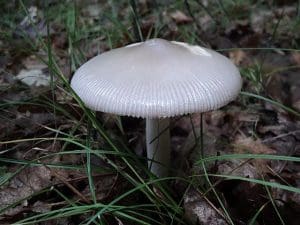
Stem:
They are fairly long up to 15cm and are similar in colour to the cap. They do occasionally have a faint zig-zag or snakeskin pattern of brown scales. At the base, there is a white sack-like volva structure. They also lack a ring which is present in most Amanitas.
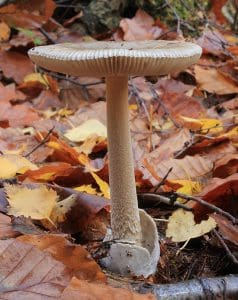
Gills:
The gills are white to off yellow, free or slightly adnexed and are crowded.
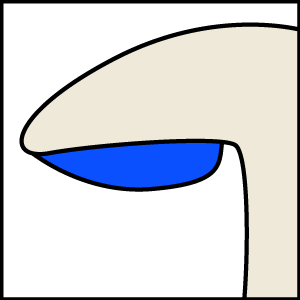
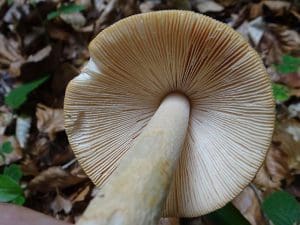
Smell:
No real smell.
Spores:
White.
Uses
In food
They must be thoroughly cooked before consumption. They do contain some toxins but these are destroyed by heat.
The taste and texture is pleasant but due to the risk of confusing them with deadly Amanitas they’re not very often collected.
Harvesting
Not for the novice. Only experienced or stupid foragers collect ring-less Amanitas.
Telling the Grisettes apart from one another can sometimes be difficult, they are all edible when cooked so are good to learn. In general, they differ from other Amanitas in a number of ways; they tend to be medium to large mushrooms with distinct caps, gills and stems. The caps are generally smooth and free from any volval remains and they have striations along the edge. Their gills are white to off white, free and crowded. Their stems lack a ring but may have a snakeskin pattern, the stems terminate in a sack-like volva structure.
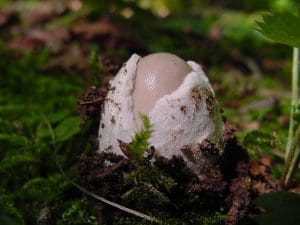
Known hazards
They must be thoroughly cooked before consumption.
Potential lookalikes
Other Amanitas, some of which are deadly poisonous.
Other ring-less Amanita’s that look similar are the:
The Tawny Grisette (Amanita Fulva) but this has a darker more brownish coloured cap and lacks the zig-zag pattern on the stem.
The Snakeskin Grisette (Amanita Ceciliae) is also similar in appearance and has a snake-skin, zig-zag pattern of scales of the stem.
The Grisette (Amanita Vaginata) looks very similar but tends to be darker in colour.
All three of these are edible when cooked.
Extra Notes
The common name Grisette apparently comes from the French gris meaning grey and was also applied to a course, woollen fabric worn by working-class women. The Latin name Vaginata derives from Vaginatus, meaning ‘protected by a sheath in reference to the volva structure they grow from.



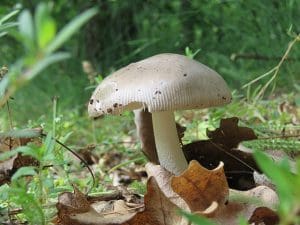



Leave a Reply
You must be logged in to post a comment.